The Aces
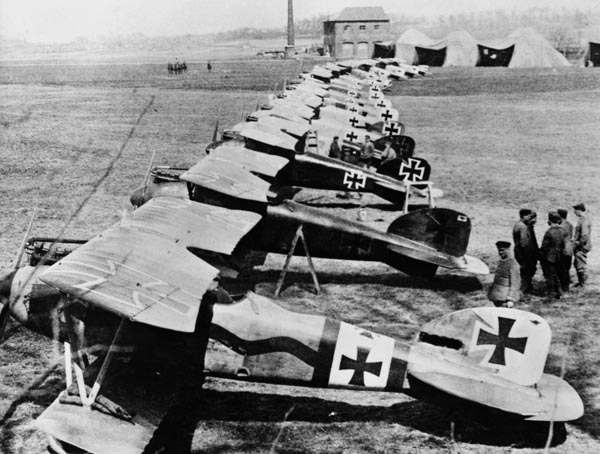 Fighter Flying Aces of the Great War: Classed in general agreed on victories, these are the Top Aces of ww1. Some raised to national superstar, almost demigod status, like Manfred Von Richtofen, the “Red Baron”. Named after his brightly colored Dr.I. when shot down in Beirish Lines, his reputation was such that the British organized grand funerals and even notified it to the nearest Jasat in order foir their pilots to drop funerary.
Fighter Flying Aces of the Great War: Classed in general agreed on victories, these are the Top Aces of ww1. Some raised to national superstar, almost demigod status, like Manfred Von Richtofen, the “Red Baron”. Named after his brightly colored Dr.I. when shot down in Beirish Lines, his reputation was such that the British organized grand funerals and even notified it to the nearest Jasat in order foir their pilots to drop funerary.
The very first (for which Newspapers coined the famous “ace”) however, was the French Adolphe Pégoud after he downed seven German aircraft. The “victory” standards varied between different air services and countries, and verifications on the ground were often problematic as one might expected. However it was generally accepted that a pilot became an “ace” after five victories.
It could seems low, as in an average dogfight a skilled pilot could down several planes at once, on the same day (two-three sorties), but bear in mind life expectancy of a pilot was then short, at least on the Western front. There were also many cases of unconfirmed victories. The name “ace” derived from the prime past time of all pilots in between alerts (after drinking): Playing cards.
Sources get confused despite production numbers compared to scores of squadrons or jasta. But they are in fact not that helpful and modern Historians still have these counts evolving. These figures below are those generally accepted today.
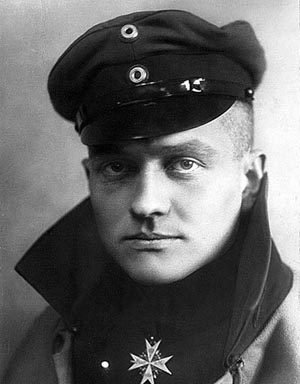
The “Ace of aces” shot down, despite his young age, no less than 80 aircrafts. He was long to became an ace, arriving in march 1916 to only be considered one in October, but until April 1918 he would be raised at a National level of fame unmatched at the time. He was noted as a fine tactician and marksman, not as dashing as his brother Lothar (40 Victories) or Werner Voss. He was given his own Jasta 11 in January 1917, soon known as the “flying circus”. Although disciplined in tactics, these pilots had their brightly colored planes used as a psychological terror advertisement. This coincided with the adoption of the Fokker D.VII (developed with Richtofen), soon one of the best -if not the best- fighter of WW1, to create an allied eclipse in the air (“Bloody April”) which will last until May and the arrival in numbers of the new allied SE.5, Sopwith Camel, and SPAD S.XIII. Richtofen was ultimately killed in action by an unknown pilot (controversy still rages on) one year after, on 21 April 1918. Although his score is largely beaten by WW2 aces like Erich Hartmann and his 352 victories, he is best remembered and was depicted in many movies and fictions, perhaps because of the Nazi shadow lurking above Hartmann and most German ww2 pilots.
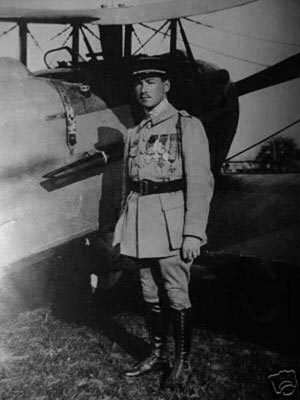
René Fonck (March 1894 – 18 June 1953) was a French aviator and top Allied fighter ace, which a hunting board which still hold for the 20th/21st centuries the title of “all-time Allied Ace of Aces” in the classic definition of the “allies”, whether it’s against Nazi germany and the Soviet Block. He received 75 victories, confirmed (And three shared) out of 142 claims, which melted with probable claims, made Fonck’s final tally nearer to 100 and above. An Officer of the Legion of Honor in 1918 and later Commander of the Legion of Honor, owner of the Military Cross and the British Distinguished Conduct Medal. He was remarked for his “cold” and very efficient hunting habits. Only firing at the best possible moment with very few rounds, in a nearly-surgical way. This did not prevented him from exerting his skills in dogfights with daring bravado as he coined himself “when alone, I perform those little coups of audacity which amuse me…”. But Fonck was possibly the most notable to display a clinical professionalism, applying mathematical principles to aerial combat, and his own knowledge of the capabilities of the plane from an engineer point of view, more than any other known pilot. He learned to fly in 1915, and only started his board in 1916, and only had his second kill in March 1917, cumulating 500 hours of fight time which was unheard of at that time. By 15 April 1917 (“Bloody April”) he was already a top scorer for the famous “Storks” fighter squadron, the most decorated unit in France, cumulating more kills than any other allied unit. He made its favorite the SPAD XII and tried a variant known as the “Spad-Canon” with a 37 mm gun firing through the propeller hub, downing 11 German planes this way. After the war, he published his memoirs, became a Member of Parliament, attempted the first transatlantic flight, and became an Inspector of French fighter forces from 1937 to 1939. During the war his behaviour was contrasted. In one hand he developed excellent relationships with Hermann Goering, another WW1 ace, and on the other maintained strong links to the resistance and fellow pilots like Alfred Hertaux, and was eventually arrested by the Gestapo and later cleared of all suspicions of collaboration with the Vichy regime. Fonck was from Lorraine and the Vosges region, bordering Germany. He was never liked or be popular in the medias however the same way as Nungesser.
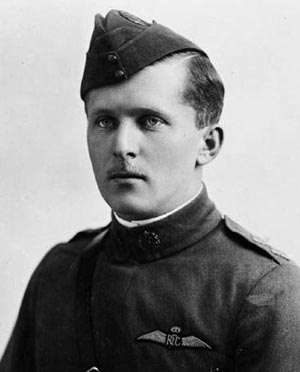
Air Marshal William Avery Bishop, born 8 February 1894 in Owen Sound, Ontario, was a Canadian flying ace officially credited with 72 victories, making him the top Canadian ace of the war. As a youngster he preferred swimming, horse riding, and shooting, and not a devoted student and developed an early appetite for aviation, making and “flying” a few meters a DiY aircraft. He entered Royal Military College of Canada (RMC) graduated in 1911, and was in 1914 in 7th Canadian Mounted Rifles, where his superhuman eyeshot was remarked. He was sent in 1915 to the front but was soon bored by the life in trenches and wanted action. He went to the RFC as an observer, not having places for training, but get there some basis. He later had a place and flew an Avro 504, and flew RE.7 in St.Omer from January 1916. He crashed and recovered in London, and after a quick passage to No. 37 Squadron RFC for night patrols, he sail to France again, 60 Squadron near Arras, flying a Nieuport 17. He became flight commander after his 4th victory, and started “lone wolf” missions on his own, with the benediction of his officer, becoming an ace on 8 April 1917. On 30 april he even met Manfred von Richthofen in duel. He later earned the VC after having destroyed several planes on the ground on an airfield, shooting down also taking off aircrafts. He passed later on the Royal Aircraft Factory S.E.5s until the end of 1917, becoming the world’s third top ace. He was later back to Canada for a leave, married, and then was invited to Washington, D.C. to help the AEF building an air force. Back in Europe, in April 1918, he became the head of No. 85 Squadron, the “Flying Foxes”. An eminent figure in aviation after the war, Bishop became the first Canadian Air vice-marshal in 1936. In ww2 he was also instrumental in setting up and promoting the British Commonwealth Air Training Plan. He died while on vacations in Florida, at age 62, in 1956.
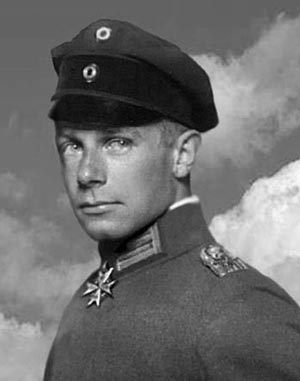
Ernst Udet (26 April 1896 – 17 November 1941) was a German pilot and second best Ace in WW1, and air force general during World War II. Udet joined the Imperial German Air Service at age 19, eventually becoming a notable flying ace of World War I, scoring 62 confirmed victories by the end of his life. The highest scoring German fighter pilot to survive that war, and the second-highest scoring after Manfred von Richthofen, his commander in the Flying Circus, Udet rose to become a squadron commander under Richthofen, and later under Hermann Göring.
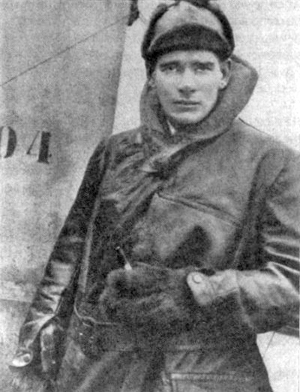
Edward Corringham “Mick” Mannock was a pioneer of fighter aircraft tactics which amassed 61 aerial victories, making him the fifth highest scoring pilot of the war. Born in UK in 1887, lived in India, then back in Ireland, fervent supporter of Irish nationalism and Independent Labour Party. In 1914 he was a telephone engineer in Turkey and later joined the Royal Engineers, Royal Army Medical Corps, and from 1916 the RFC, to became a pilot. He scored his first victory on 7 May 1917 and by February 1918, with 16 victories and became Flight Commander of No. 74 Squadron. He won 36 more victories in April—June 1918 and moved to No. 85 Squadron in July 1918, earning nine more before being killed in a dogfighting as he was flying too close to the ground, on 26 July 1918. He received the Military Cross twice and earned three DS, and posthumously the VC.
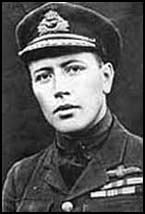
Raymond Collishaw, CB, DSO & Bar, OBE, DSC, DFC (22 November 1893 – 28 September 1976) was a distinguished Canadian fighter pilot, squadron leader, and commanding officer who served in the Royal Naval Air Service (RNAS) and later the Royal Air Force. He was the highest scoring RNAS flying ace and the second highest scoring Canadian pilot of the First World War. He was noted as a great leader in the air, leading many of his own formations into battle. As a member of the RAF during the Second World War, he commanded No. 204 Group (which later became the Desert Air Force) in North Africa.
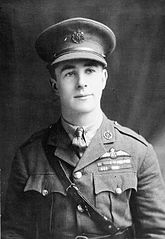
James Thomas Byford McCudden (28 March 1895 – 9 July 1918) was an English aceand one of most highly decorated airmen in British military history with the VC, DSO & Bar, MC & Bar, MM. He joined the Royal Engineers in 1910, and as a mechanic joined the Royal Flying Corps (RFC) in 1913. But when the war broke out he flew as an observer and two years later started training. McCudden first victory came in September 1916 and became an ace in February 1917. He served as an instructor and flew over London but returned to the frontline in the summer. He downed 31 more aircraft with many victories the same day in 11 occasions. He won six British medals, one French, he served quite long afterwards. By 1918 he was a superstar thanks to an unrelenting campaign by the Daily Mail achieving 57 victories, mostly within the 56 Squadron RFC on a S.E.5a. But he was killed on 9 July 1918 because an apparent an engine fault and was buried at the Beauvoir-Wavans war cemetery.
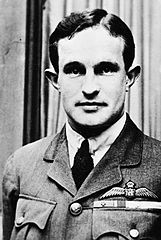
Andrew Frederick Weatherby (Anthony) Beauchamp-Proctor (1894-1921) was a South African airman. He won during his service the Victoria Cross (highest award for gallantr) and DSO, MC & Bar, DFC. South Africa’s leading ace of the Great War with 54 aerial victories. He was a son of a school teacher, born in Mossel Bay, Cape Province. He quitted his studies to join the Duke of Edinburgh’s Own Rifles, and signalman in the German South-West Africa campaign. But in 1915 he was demobilized, returned working with the South African Field Telegraph and afterwards joined university to get his degree. He then re-enlisted, this time with the RFC in March 1917. He made his way from Air Mechanic Third Class to the School of Military Aeronautics as a trained pilot. Despite his unusually small stature of five feet two inches (1.57 m) he flew as an observer with some modifications in the plane, and on 10 June 1917 he was flying himself. He served with the bomber squadron, later reformed as a fighter Sqn in July. There, he started gaining victories, flying SE5s in France. He was not an outstanding flyer but a very deadly shot, like Fonck. By 31 May 1918 he had shot 31 aircrafts and this was to augment until V-day. He was badly wounded in combat at the end of the war, discharged from hospital in March 1919 and started a tour of lectures in the USA, was decorated by the queen, but was killed while testing on 21 June 1921 a Sopwith Snipe.
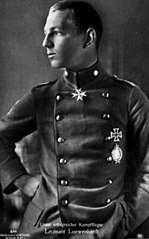
Erich Löwenhardt (1897 – 1918) was the 3rd highest German ace, behind only Manfred von Richthofen and Ernst Udet. He was born in Breslau, Silesia, the son of a doctor, and in 1914 fought with Infantry Regiment Nr. 141. He was wounded near Łódź and went through the Battle of Tannenberg, and later was wounded again, noted for outstanding bravery and won an Iron Cross Second Class and fought in the Carpathians and by early 1915 received an Iron Cross 1st Class. He also served with the Alpine Corps on the Italian Front. After a long illness, he volunteered for the Imperial German Army Air Service. He served with the Flieger-Abteilung Flier Detachment 265 and later transferred to fighters. He won his first victory on 24 March 1917. Flying Albatros and Pfalz fighters, Löwenhardt was recoignised as a aggressive, skilled fighter, and by April 1918 he flew with a Fokker D.VII, as Jasta 10 commander and Knight’s Cross with Swords of the House Order of Hohenzollern after his 24th victory. His rivalry with the young Richthofen, also his wingman often, developed, as the Jasta 10 belonged to The Flying Circus. However he late his fate in 1918 when fighting the No. 56 Squadron RAF, colliding with Leutnant Alfred Wenz from Jasta 11, he jumped but his parachute failed to open.
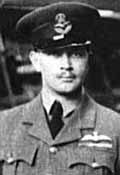
Donald Roderick MacLaren (1893 – 1988) was a Canadian flying ace credited with 54 victories which later helped found the Royal Canadian Air Force (RCAF) awarded the DSO, MC & Bar, DFC. Born in Ottawa he moved to Calgary in 1899 and Vancouver in 1911 and the next year Montreal to study at McGill University. He also worked in a fur trading post on Peace River, learning to speak Cree in 1914 but in 1916 his family joined the war effort so he joined his father at the Imperial Munitions Board but Donald later joined the RFC, and trained at 90 Central Training School, Armour Heights, then Camp Borden and in UK at No. 43 Training School, Ternhill and later No. 34 Training School for advanced fighter techniques on the Bristol Scout and Sopwith Camel. He joined the Western front in November 1917, No. 46 Squadron. he shot down aircrafts, destroyed a railway gun with his bombs, a balloon, won the Distinguished Flying Cross and became the squadron commander, was injured in combat, but was in the hospital when the Armistice was announced, winning the DSO for his leadership. He was also awarded the French Legion of Honour and Croix de guerre. Later in his life he would formed Pacific Airways (later Western Canada Airways) and passed out on 4 July 1988, aged 95.
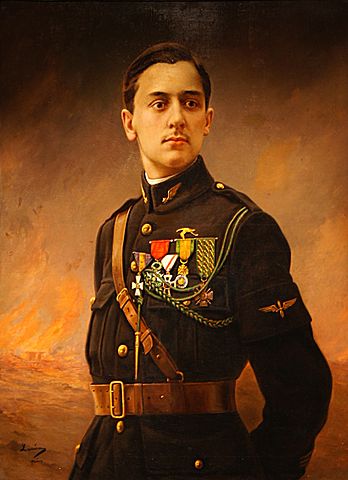
Georges Guynemer 1894 – 1917 was the second best French ace of the war and certainly the most famous and best loved by the press and general public. It was largely a question of personality. Fonck’s own way of approaching medias was apparently a bit rough, as he was a colder, earthly, healthy individual, rarely expansive. Guynemer by contrast was a refined aristocrat -His mother was Julie, Countess of Saint-Quentin- and a frail, sickly individual. This poor health was compensated by his will to succeed. As 1914 dragged on, he has been rejected 5 times for military service due to frailty when he was finally accepted as a mechanic, bu finally gained acceptance to pilot training, and joined Escadrille MS.3 on 8 June 1915, for the duration of the war and until he disappeared. he first flew a Morane-Saulnier L monoplane dubbed “vieux Charles”, a nicknamed he reused for all his planes afterwards. He short down an Albatros, his first victory, on July 1915, and in December his unit was renamed Escadrille N.3, and re-equipped with new Nieuport 10 fighters. He was an ace in February 1916 and soon became France’s premier fighter pilot, praise by his commander Brocard. His unit became the famous Storks squadron, the most decorated French unit of the war. By the end of 1916 his influenced was such that he wrote a letter to the chief designer at SPAD, criticizing the model VII as inferior to the German Halberstadt. The design was amended, giving birth to the models XII and XIII. In march 1916, Guynemer became the first allied pilot to shot down a Gotha bomber. He also flew the difficult 37 mm (1.46 in) cannon armed SPAD XII he helped design. He short down several planes with it and became the first French ace with 50 victories. On 11 September 1917 he flew his last mission, with rookie pilot Jean Bozon-Verduraz he patrolled near Poelkapelle when sighting a lone Rumpler, whereas his wingman spotted several Fokker, but when he was about to warn him, Guynemer was nowhere in sight. To this day his disappearance remains a mystery.
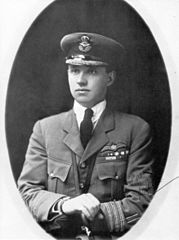
William George “Billy” Barker (1894 – 1930) was a Canadian ace, recipient of the VC, DSO & Bar, MC & Two Bars with 50 victories, most decorated serviceman in Canadian history. He was born in Dauphin, Manitoba, on the frontier of the Great Plains, already known as an excellent rider and exceptional shot. A natural sportsman he fell in lover with aviation back in 1910 and when he graduated from the Dauphin Collegiate Institute in the fall of 1914 he enlisted. He was first a 1st Canadian Mounted Rifles but then joined as an observer on a BE2C from the 9th Squadron of the Royal Flying Corps. By 7 July he was transferred to the 15 Squadron and short down a Roland with his personal MG already. In January 1917 he was trained as a pilot at Netheravon, and made his first solo flight after 55 min. of dual training only, showing his uncanny mastery of his machine. He scored his first victory in France but was soon versed, 7 November 1917, to the Italian Front, until the end of the war. There, he amassed most of his victories. By April 1918 he flew a Sopwith Camel as a commander of the 139 Squadron. Because of his skills he also flew missions behind enemy lines, carrying spies with his Italian Pomilio SP4. In October he was back in France with the No. 201 Squadron RAF, trying to teach new innovative tactics. By October 10, he led his most legendary duel with a brand new Snipe. He shot down a Rumpler, only to fall into a large formation of Fokker D.VIIs of Jagdgruppe 12. He battled and dogfighted for his life during long minutes against perhaps 15 to 20 Fokkers, was wounded three times in the legs, and his elbow was blown away. He managed to crash-land into friendly lines and was brought back in a Rouen Hospital, then sailed back to Canada and was still recuperating when the war ended. His fight seen from the ground has many testimonies. Barker became a Canadian hero.
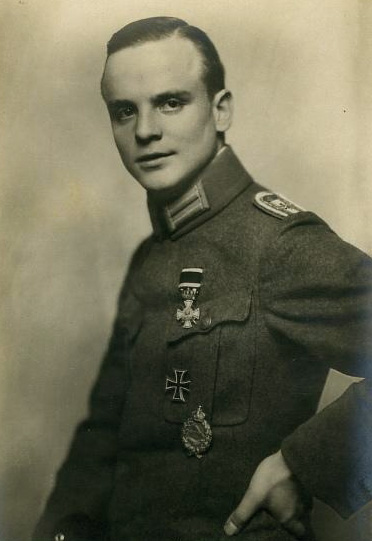
Josef Carl Peter Jacobs was born in Kreuzkapelle, Rhineland, on 15 May 1894. He learned to fly in 1912, aged 18 in Hangelar near Bonn. He joined up for the Imperial German Army Air Service in 1914 to train as a pilot and flew with the Replacement Detachment 9. He served with a recced squadron from 3 July 1915, FA 11. He short down hist first enemy, a French Caudron occurred in February 1916 (unconfirmed), then swapped to a Fokker E-III, he won other visctories, fell ill from dysentery but returned in October 1916, and served with Jasta 12 and Jasta 22. From August 1917 he served with Jasta 7 and remained there until 1918. He had won 24 victories on July 1918, being awarded the coveted Pour le Mérite and went on until the end of the war with 48 enemy aircraft and balloons. However his career went on in the Baltic against the Bolsheviksw with Kommando Sachsenberg. He also served as instructor with the Turkish air force. After 1933 he was a major in the air reserve. He refused to adhere to the NSDAP and later fled to the Netherlands. There he was protected, hidden by his friend the Military Governor of the Netherlands and after the war went back to Bavaria, became president of The German Bobsleigh Society, helped aviation Historians and passed out in 1978, the last surviving “Blue Max” recipient alive.
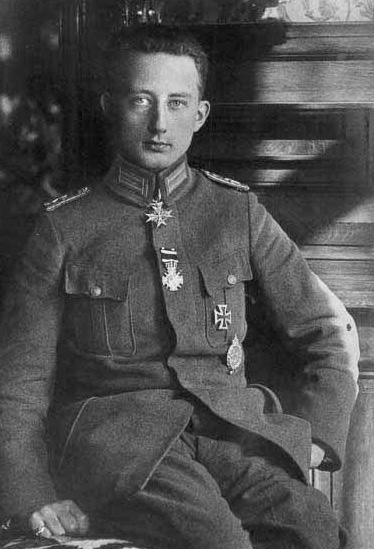
Werner Voss (Werner Voß) (1897 – 1917), a dyer’s son from Krefeld, was a patriotic young man which started his military career in November 1914 as a young Hussar (17 years old). He soon turned to aviation, and proved gifted by all standards. He attended a flight school and served six months in a bomber unit. Then he joined the Jagdstaffel 2 on 21 November 1916, making friends, including Manfred von Richthofen. By 6 April 1917, he had scored 24 victories and was aarded the “Pour le Mérite” (Blue Max). He missed however Bloody April, where Richthofen scored 13 victories, but still, Richthofen regarded Voss as his only true rival. However at his return, Voss dsuabbled with his squadron commanderand took a leave to evaluate the new Fokker Dr.I, flying in three temporary squadron commands. He was given eventually command of Jagdstaffel 10 by July 1917, with 34 victories. However he made his “last stand” on 23 September 1917 the same day after his 48th victory. He was found flying solo against eight British aces led by James McCudden, which would descrobe this epic duel, probably the most amazing of the war in the air, as “the bravest German airman”.
Robert Alexander Little (1895 – 1918), became the Australian top ace, with an official board of forty-seven victories, awarded the DSO & Bar, DSC & Bar and French Croix de Guerre. He was born in Victoria and travelled to England in 1915 to serve and learning to fly, all at his own expense. He joined afterwards the Royal Naval Air Service (RNAS), and was sent on the Western Front in June 1916 at No. 8 Squadron. There, he flew Sopwith Pups, Triplanes and Camels, earning thirty-eight victories. Badly wounded, and out of action in July 1917, he was back on the front in March 1918, scoring nine more victories, this time with with No. 3 Squadron RNAS but he took off on the night of 27 May for his last mission. He was about to engage a squadron of bombers when he was caught by the light of a proujector and his plane pumelled by fire. One bullet apparently perforated both his thighs and he crashed landed, only to bleed to death and being discovered much later. He was twenty-two.
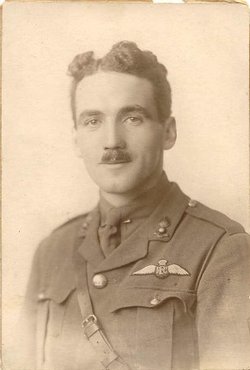
McElroy was born at Donnybrook, County Dublin, Ireland and enlisted in August 1914, sailing out to France, he was a corporal in the Motor Cyclist Section of the Royal Engineers and second lieutenant in May 1915. He was struck by mustard gas, sent home but later took part in the Dublin April 1916 Easter Rising, but to quell the insurrection and joined a southerly garrison as he failed to fire on his fellow countrymen. He resigned his commission in 1916 from the Royal Irish Regiment and joined the Royal Military Academy, Woolwich, graduating on 28 February 1917, second lieutenant in the Royal Garrison Artillery. He served in the Royal Flying Corps, trained as a pilot at Upavon, and commissioned on 9 February 1916 and in mid-august joined No. 40 Squadron RFC. He learned a lot from Edward Mannock, flew a Nieuport 17, and later a S.E.5s, downing his first enemy on 28 December. He was soon recognised as an extremely aggressive dog-fighter. He joined the No. 24 Squadron RFC and later won the Military Cross but was injured in a landing accident on 7 April 1918. Back to No. 40 Squadron in July 1918, he became a balloon buster. On the 20 he had engine problems and made a rough emergency landing. He won a DSO and afterwards, on 31 July 1918, was reported mssing after claiming his 47th victory and taking off again. He was killed by ground fire, at 25 years old.
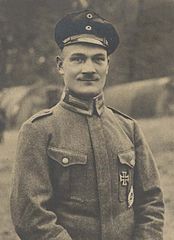
Fritz Rumey (March 3, 1891 – September 27, 1918)
He was awarded the Pour le Mérite (“blue max”), and Golden Military Merit Cross. He engaged as an infantryman during the war, in the prussian 45th Infantry regiment, on the Eastern Front. He was decorated already with the Iron Cross 2nd class. In August 1915 he however applied for the more prestigious air service, flying at first as an observer attached to the Fliegerabteilung (Artillerie) 219. He naturally trained as a pilot and was sent to France in early 1917. He served with Jasta Boelcke, Jagdstaffel 5 from June. He flew frequently with his “team mates”, Josef Mai and Otto Könnecke, scoring 40% of the squadron’s successes. The team was nicknamed “The Golden Triumvirate” and he decorated his plane with a demon’s head. He downed British ace Captain Gerald Crole but was wounded in August 1917, and 24 September but earned most of his victories in 1918. He killed another ace, Lt. James Dawe of No. 24 Squadron, became leutnant then got ace Lt. Edward C. Eaton (No. 65 Squadron) and from then was flying a yellow Fokker D.VII. There were several account about his death in September. He could have collided with Captain G. E. B. Lawson SE5, and parachute not opening, or shot down by Lieutenant Frank Hale, and again, his parachute did not opened.
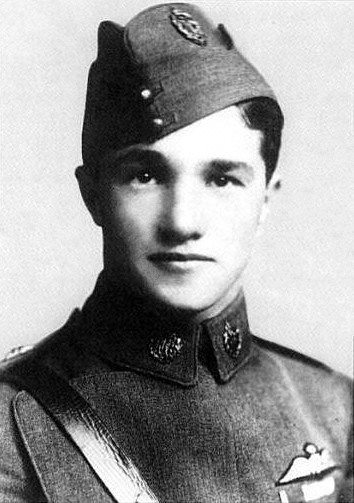
Albert Ball (August 1896 – May 1917) was an English fighter pilot and UK’s leading flying ace, with 44 victories, decorated by VC, DSO & Two Bars, MC, fourth-highest scorer. From Nottingham, he joined the Sherwood Foresters and served as a second lieutenant in October 1914. He joined the Royal Flying Corps in 1916, and became a pilot on 26 January 1916. His first unit was No.13 Squadron RFC. He started doing reconnaissance flight but soon joined No. 11 fighters Squadron, started to earn victories, plus two DSOs and Military Cross, and became a British national hero. He became as popular was Richtofen in Germany and Guynemer in France. Ball later joined No. 56 Squadron in April 1917 but crashed to his death on 7 May, sparking a wave of national mourning, Manfred von Richthofen himself stated he was “by far the best English flying man”.
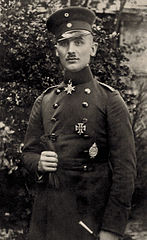
Oskar Gustav Rudolf Berthold (1891 – 1920) which shot down 44 enemy planes, 16 of them one-handed. His perseverance and bravery, even wounded made him a celebrity. He the German Imperial Army in 1909, paying for piloting lessons, and was breveted pilot in 1913. He flew crucial reconnaissance missions in 1914, playing a role informing the general staff decisively at the Battle of the Aisne. In 1915, he became one of the first aces and commanded a fighter unit in August 1916, scoring five victories. However he then suffered severe injuries in a crash and in hospital for four months. He returned to duty but by 24 April 1917, but was wounded again, winning a Pour le Merite (blue max). In August, he fled again medical care to return fighting, and scored 16 more victories. However he was harmed by a British bullet on 10 October 1917, his arm nearly amputated when he was taken car of by his sister Franziska to be taken care of by a specialist. From February 1918, he commanded the the world’s first fighter wings. From May he flew one-handed under narcotics but shot down 14 more enemy airplanes by August and two days later shot down his final two but was downed himself. He was back to the front, while a direct order from Kaiser Wilhelm II forced him to return to medical care. After the war, he organized a Freikorps and fought the Bolsheviks in Latvia, being killed in political street fighting in Hamburg, 15 March 1920.
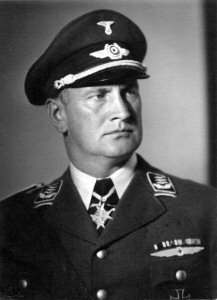
A Berliner, Loerzer was a prewar army officer, already learning to fly in 1914 and Hermann Göring was his observer from October 1914 until late June 1915. He went to a fighter Squadron in 1916 before joining Jagdstaffel 26 in January 1917. He earned 20 victories at the end of October, receiving the Pour le Mérite in February 1918. He also took command of the Jagdgeschwader III, the third “flying circus” (Jasta 26 and three other Sqns). His dream team included aces such as his own brother Fritz (11 victories) and Hermann Dahlmann, his wingman. Especially with the arrival of the new Fokker D.VII, JG III decimated the opposition in the summer of 1918. Loerzer last victory was acquired in September (44) and was promoted to Hauptmann after the war. He fought with the Freikorps until March 1920, commanded the Weimar Rep. FA 427 in the Baltic area and in the 1930s was leading civil aviation organizations like the National Socialist Flying Corps (NSFK), joining the Luftwaffe in 1935 as Oberst (colonel). He became an Inspector of Fighters as a major general in 1938 and later commanded the II Air Corps (Knight’s Cross in May 1940) and later was part of the 2nd Air Fleet in Russia. He was transferred in Sicily in October 1941 until 1943, while becoming a Generaloberst and by June 1944 was heading the NAZI Branch of the Luftwaffe and died in 1960.
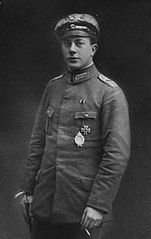
Paul Wilhelm Bäumer (May 1896 – July 1927) was born in Duisburg, Germany and a dental assistant before the war, earning a private pilot’s license this same Summer of 1914. However he joined the 70th Infantry Regiment in the western and eastern fronts, was wounded in the arm and transferred to the air service, still as a dental assistant before being accepted for pilot training. In October 1916, he was an instructor and staff “taxi” but by February 1917, he was promoted to Gefreiter and in March joined at last Flieger Abteilung 7, and later became Unteroffizier. In May 1917, he won the Iron Cross Second Class and became a fighter, joining Jagdstaffel 5 in June 1917. He scored three victories as balloon buster and joined the Jasta Boelcke (Jagdstaffel 5) on an Albatros D.V. After scoring many victories he was commissioned in April 1918 but badly injured in a crash in May and was back to his Jasta in September. Now on a Fokker D.VII his hunting board grew steadily, to be nicknamed “The Iron Eagle”. His plane famously had as personal emblem an Edelweiss, symbol of courage. He was one of the first pilot saved by a parachute, in September. After a Pour le Mérite well deserve for his years of service, he worked briefly in dockyards, as dentist, possibly influencing one of his patients Erich Maria Remarque for one protagonist of “All Quiet on the Western Front.” He founded his own aircraft company in Hamburg but crashed at Copenhagen on 15 July 1927 when testing a Rohrbach Ro IX fighter.
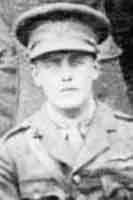
Thomas Falcon Hazell (August 1892 – September 1946) was a fighter pilot of Irish descent, from County Galway flying with the Royal Flying Corps and the Royal Air Force in the interwar. He scored 43 victories in 1917–18, and was the fifth most successful British ace of the war, awarded the DSO, MC, DFC & Bar. He was also the third best Irish-born pilot behind Mannock and McElroy and the only one to survive. He fought first in the infantry, with the South Irish Horse, and 7th Battalion, Royal Inniskilling Fusiliers (49th Brigade, 16th (Irish) Division). But his unit was only deployed in France by February 1916 and he soon applied to join the RFC. He sufferred a crash but earned his pilot licence on fghter and was quickly remarked for his skills and daring ways. By the mid-1917 he already had 20 victories and was noted for “conspicuous gallantry and devotion to duty. On several occasions he displayed marked courage and determination in attacking and destroying hostile aircraft” awarded the Military Cross on 26 July. He was also wing commander. He served as an instructor at the Central Flying School in the summer of 1918, but soon returned as a major, to lead “A” Flight, No. 24 Squadron (equipped with the S.E.5a), however his career ended after a brave attack of an observation balloon, escorted by seven Fokker D.VII, including Ernst Udet (which downed his plane). He commanded No. 203 Squadron (Sopwith Camels) from October 1918 to April 1919, and commanded several units before asking to be retired in 1927. During WW2 he commanded “D” Company, 24th (Tettenhall) Battalion, South Staffordshire Home Guard.
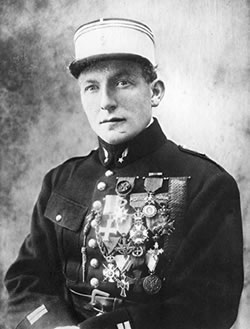
Charles Nungesser (born 15 March 1892 in Paris) started with competitive sports, failed at the École des Arts et Métiers and went to South America to search for a disappeared uncle. He worked at Buenos Aires as an auto mechanic and became a professional racer and then turned to airplanes, flying a friend’s Blériot. He found finally his missing uncle and worked on his sugar plantation, then returned to France at the declaration of war, as a cavalryman, at the 2e Régiment de Hussards. He won the Medaille Militaire and was granted to enter the air corps. He joined Escadrille VB106 and in July 1915, shot down his first plane, a German Albatros despite he flew a Voisin Bomber (and was decorated). He shot down others and finally joined Escadrille N.65. But Nungesser was frequently placed in house of arrest as he disliked military discipline and frequently flew without permission. He also was a hard-drinking and known womaniser, frequently in Paris. Perhaps more than any other aces of the time, his flamboyant lifestyle of risk-taking, good living, fast cars driver won him a reputation in the press and he was adored by his comrades, unlike the somewhat unsociable René Fonck. He became meanwhile an ace in April 1916 and earned scores of other victories including German aces like Hans Schilling and Kurt Haber. His plane was decorated with a heart-shape and Jolly Roger, coffin and candles, and was soon called “The Knight of Death”. He pushed his luck though and was frequently at an hospital after crashes. By August 1918 he flew with a SPAD XIII and ended the war with 43 victories and alive, decorated by dozens of military decorations from France, Belgium, Montenegro, United States of America, Portugal, Russia, and Serbia. After the war he worked in the film industry, travelled a lot, and tried to crossed the Atlantic in 1921 in the “White Bird” with his comrade Coli but disappeared in the attempt. He could have been the French Lindbergh. But this made the legend perfect.

Tunis-born, Madon was another sportsman, athletic from an early age, short in stature, but nervous and strong, boxing and playing football. He was passionated about aviation at 15, and even attempted to built an fly his own craft, built models and kites, and a bicycle-powered “aviette”. He eventually became a pilot for the Ottoman Empire and later enlisted in the First Engineering Regiment in Versailles, and ended up as a cook, but repeatedly requested pilot’s training. He became a pilot in June 1911, after 19 lessons and had his military pilot’s license in 1913. He flew first from 1914 in squadron BL30, and during one of these early days, his low-flying Bleriot was hit directly by a 77 mm shell that blew up the engine. he successfully managed to get back to friendly line. After being blew off by strong winds he crash-landed his Farman in Switzerland and was interned for some time. In 1915 he joined Escadrille MF218 which performed artillery observation. After requesting a fighter assignment he got one at the N38 on September 1, 1916, flying Nieuport 17s. He soon won his first victories, and by March 1918 won 25 victories. He was promoted commander of Spa38, flying Spad XIIIs, he mentored several pilots that became aces, like Andre Martenot de Cordou, Hector Garaud, and American David Putnam. At the end of the war, he had 41 confirmed victories and 64 probables. In 1922 he flew a race plane for the Coupe-Deutsch Race. However after coming back in Tunisia he was killed during an exhibition tribute to fellow airman Roland Garros, aged 32.
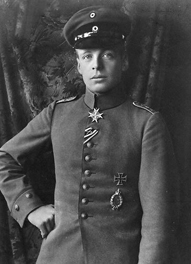
Oswald Boelcke (May 1891 – October 1916) was a famous German ace credited with 40 victories and one of the most influential patrol leaders and tacticians of the war. He indeed is considered the father of the German fighter air force, and Air Fighting Tactics, codifying all, known as Dicta Boelcke. He promulgated rules for pilots, in formation fighting. Before that, he soon seeked a military career and joined German Imperial Army in 1912. However he was learning to fly when he war started. He first flew as an observer, but became one of the first fighter pilots in early 1915. He codified his combat experiences into the first manual of fighter tactics, largely distributed to the first squadrons (Jastas) and later was asked to transform the Fliegertruppe into the Luftstreitkräfte, fully independent from the Army. In July 1916 he had scored 19 victories, and led the Jagdstaffel 2 (Fighter Squadron 2), at that time the world’s leading fighter pilot, but he was later killed by a midair collision on 28 October 1916, ending his fighting career that would have allowed him to mount a much more impressive hunting board, probably over 90 victories. Four aces in his Jasta which produced some 25 aces would eventually become generals. Squadron Boelcke counted men of caliber such as Manfred von Richthofen, and became the most successful German fighter unit of the war.
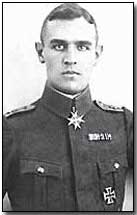
Franz Büchner (January 1898 – March 1920) was one of the best German aces and one which survived the war, but dying communist revolutionaries soon after. Büchner was born in Leipzig (Saxony) the son of a businessman, volunteering for the army in September 1914 at only 16. After the 7th Infantry Regiment he almost died of typhoid fever, and return to fight Eastern and Western fronts. He was wounded in combat in France by April 1916,recovered and was offered to join the Luftstreitkräfte, as an observer with FFA 270. In March 1917 he became a fighter pilot with Jagdstaffel 9, then Jagdstaffel 13, shepherd by Rudolph Berthold. He would eventually gain most of his victories on a Fokker D.VII in 1918. But he flew three different planes during his career. He became commander of a Jasta 13 in June. Notably he shot down “The Mad Major”, Irish ace Major Joseph Callaghan and later Canadian ace Lieutenant Merrill Taylor. His wingman, Leutnant Werner Niethammer noted his skill as a marksman, equal to Fonck. However in August his fuel tank was hit and he landed in the no man’s land. This was after his eight victory. He scored 17 more in September, and survived a mid-air collision, and later brought his total to 40 victories by October 1918, being awarded the Pour le Mérite. Soon after the Kaiser resigned.
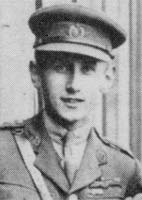
Philip Fletcher Fullard (May 1897 – April 1984) was an English flying ace and one of the most successful pilots of the RFC and superb combat leader. He was awarded the CBE, DSO, MC & Bar, AFC and was made Air Commodore, top scoring UK ace. He made most of his successes of Nieuports and survived the war. His command abilities perhaps came from an early age: An accomplished sportsman, he captained the school hockey and football teams, joined the Inns of Court Officer Training Corps in 1915, and made his early carrer in the Royal Irish Fusiliers. But he was soon chosen to join the RFC, as second lieutenant on 5 August 1916. After the Central Flying School at Upavon he was made flying officer was retained as an instructor at Upavon, but joined later the N°1 flying squadron in France by May 1917. This was followed by a string of victories, made famous by the London Gazette and shot down, among others, German ace Leutnant Hans Hoyer. He suffered a compound fracture during a soccer match that made him miss the end of the war, as only a few days were left when he returned. During his time, his own flight of six pilots brought down more enemy aircraft than any other in France; In the interwar, he commanded as flight commander with the No. 12 Squadron and in the 1930s was in the staff School of Army Co-operation. He also commanded No. 5 (Army Co-operation) Squadron at Risalpur, 1935-36 and was in UK when the war broke out. He commanded No. 14 (Fighter) Group, part of the BEF in France, he was also Air Officer Commanding No. 246 (Special Operations) Group fom 1943. After the war he worked with many companies, as chairman.
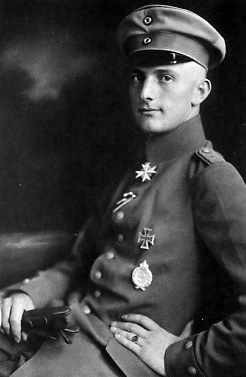
Lothar Freiherr von Richthofen (September 1894 – July 1922) was an ace credited with 40 victories, the younger brother of top-scoring ace Manfred von Richthofen aka “the Red Baron”. He was also a distant cousin of Luftwaffe Field Marshal Wolfram von Richthofen. Before the war he served briefly as a cavalry officer with the 4th Dragoon Regiment. While at high school, he was enrolled in compulsory military training at the Kriegsschule in Danzig (Gdansk, Poland) in 1914. but returned to his unit and at Attigny, he was awarded the Iron Cross for valour. He was encouraged by his brother to transfer to the Fliegertruppe by late 1915. He served as an observer with Jasta 23 during the Battle of Verdun, won the Iron Cross and trained as a pilot. He served as a fighter pilot at Jasta 11 from March 1917. He was noted as an impulsive and aggressive pilot unlike his coolier brother. He took part in “Bloody April” and assumed command of the squadron when his brother leaved.
In May 1917, Lothar von Richthofen encountered 11 S.E.5s from the “elite” No. 56 Squadron RFC, including Captain Albert Ball on a Sopwith Triplane, and suceeded to shot his down in an epic running battle in the middle of a thunderstorm over Bourlon Wood. It had quite propaganda value but this was later contested by historians but stayed in the official line.
After the war he worked for a while on a farm before taking an industrial position, married in June 1919 and flew passengers and postal mail between Berlin and Hamburg but died on 4 July 1922 in a flying accident at Fuhlsbüttel.
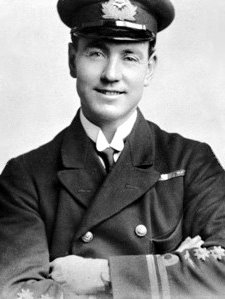
Roderic Stanley (Stan) Dallas (July 1891 – June 1918) was an Australian fighter ace, second-highest ranking Australian after Robert Little, awarded DSO, DSC & Bar. However there is still considerable dispute over Dallas’s exact total among historians. His official score was 39 (generally accepted figure) while other estimates range from 32 to over 50. Dallas flew with British fighter squadrons, not the Australian Flying Corps. he was also a recognized, effective squadron leader, on the ground as well. He was one of the best allied tactician and also a test pilot. His career started early and spanned the entire World War I. He was born in rural Queensland, travelled to UK at his own expense when the war broke out and learned to fly early on. He became a pilot in the RNAS in August 1915, No. 1 Naval Wing on the Western Front, he flew in Caudrons and Nieuport 11s. Later he was picked up to test the Sopwith Triplane, which became soon his favourite aircraft, managing to win most his victories on this plane until 1917. After earning the DSO, DSC and Bar he became the commander of No. 1 Squadron RNAS in June 1917. On April 1918, he was named at No. 40 Squadron of the RFC, flying S.E.5s. He won more victories but was killed in action on 1 June 1918 in a patrol near Liévin (Northern France).
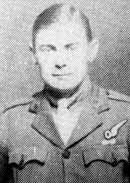
Charles George Gass MC (April 1898 – March 1977) was the highest scoring observer ace during the War, with a total of 39 victories (including 16 solo), as a gunner flying with various pilots. Born in Chelsea, London he joined in 1914 the 2/24th Battalion, London Regiment (Territorial Force) and became a sergeant by June 1916. Second lieutenant he was attached to the RFC in 1917 and by March 1918, joined No. 22 Squadron as an observer (Bristol F.2bs) in France. This “Brisfit” was as fast as many fighters, manoeuvrable, with forward-firing Vickers MG but up to two Lewis MGs, Scarff-mounted with a wide field of fire, that Gass used proficiently, better than any others. In fact he was perhaps one reason behind the development of the Hawker Turret Demon, Boulton-Paul Defiant or Blackburn Roc. Indeed he survived the war and was recalled in 1940 after a career as a postman. He flew from March to June with ace Alfred Atkey. On 7 may in particular, their Bristol and another attacked 20 German scouts, and Gass-Atkey downed five by themselves. The next day teaming with John Everard Gurdon he repeated the feat. Gass and Atkey scored their last victories in June 1918. During WW2 Gass served with the RAF Volunteer Reserve and retired in 1954.
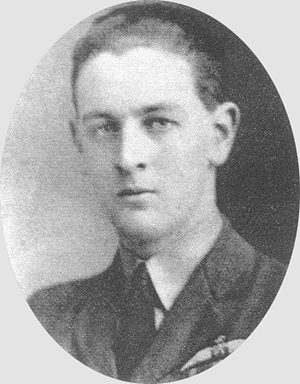
Born in Helensburgh, Dumbartonshire (Scotland) the son of a tobacco merchant he was educated in Edinburgh, a gifted rugby and fives player. He became a member of Officers’ Training Corps, ranking as sergeant. In December 1914 he joined the Argyll and Sutherland Highlanders regiment as second lieutenant, was transferred the RFC one year later and was awarded his pilot Certificate by the Farnborough training school in March 1916. He flew first with No. 27 Squadron, on a Martinsyde G.100 “Elephant”. He nevertheless scored three victories with it although doing bombing missions. In May 1917 he received the Military Cross as a bomber formation leader but late 1917, he moved to No. 65 Squadron RAF as a flight commander. Soon he flew a Sopwith Camel from December 1917. He shot a triple on 4 January 1918 and in July 1918, won the Distinguished Service Order. During the period in a single day he downed two Fokker D.VIIs and knocked another down out of control, set another Albatros D.V afire, drove away a Pfalz D.III. He also destroyed a balloon destroyed, captured an enemy aircraft. As a major he was transferred to Italy as the N°28 Squadron leader and was awarded the DSO in 1918 and later in December won a second bar to his MC. After the war however, he was briefly an air attaché in Rome in July 1919 and served in Middle East with No. 216 Squadron RAF. But in 1928 he comitted suicide in London on 25 February 1928.
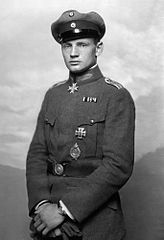
Heinrich Gontermann was a German ace, born in Siegen, Southern Westphalia, on 25 February 1896. A patriotic, religious introvert, restrained social drinker and not smoker, this tall and slender man’s father, a cavalry officer, pushed him to enlist to the 6th Uhlan Cavalry Regiment in Hanau on 14 August 1914. Wounded in September 1914, he was later promoted Leutnant in 1915, and Iron Cross Second Class recipient. However he applied for a transfer to the Luftreitskrafte, but was instead posted at the fall of 1915 in the 80th Fusilier Regiment. Finally accepted for training, graduated in early 1916, he was sent to Kampfstaffel Tergnier, as a reconnaissance pilot. His first plane was a Roland C.II.He joined afterwards the Field-Abteilung 25 on an AGO C.Is., and eventually applied to the the Jagdschule (fighter school), accepted in November 1916. he joined Jasta 5, and soon after shot his first, a FE.2b on patrol over Morval. He later won the Iron Cross First Class and scored regularly in March, made an ace this month. He scored 12 victories in “Bloody April” 1917, and started as balloon buster. He later became Staffelführer of Jagdstaffel 15, replacing Max Reinhold. His personal reputation of an aloof man was compensated to his dedication to known enemy plane types in detail and tactics; He specialized in blind spots, a precise, last moment burst adept. First marksman of his unit, and skilled aerobaticist he was remarked by Ernst Udet. In may, he won the Knight’s Cross with Swords of the Royal House Order of Hohenzollern. he later shot French ace Didier Lecour Grandmaison and received Bavaria’s Military Order of Max Joseph and later Pour le Merite. After a four weeks leave in May–June 1917 he was back to his Jasta in June, replacing Ernst Udet. He soon targeted observation balloons and in August, arounded his score with regular planes as well. However on 29 October 1917 Gontermann flew impatiently his new Fokker Dr.I. whike recuparating from a bout of dysentery. However while pulling out of a second loop the upper wing collapsed and broke off and he plunged into the ground. He survived the fall only to die from his injuries several hours later. Following a string of accidents on the new triplane, Fokker was wildly criticize for the flimsy construction and has to modify the production planes, after a high human cost indeed…
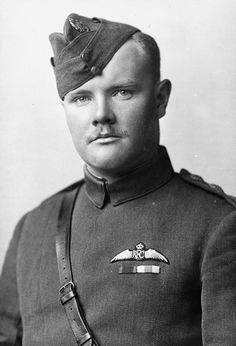
William Lancelot Jordan was born in Georgetown, South Africa in 1896, the youngest son of Mrs. J. E. Jordan., which later moved to London. He enlisted in the RNAS first as a mechanic in September 1916. He flied first as a gunner, later graduating as a pilot in 1917 and joined 8th Naval Squadron operating on Sopwith Triplanes, and quickly afterwards, Sopwith Camels, on which he won his 39 victories. He also became Naval Sqn.8 leading ace, and third best Sopwith Camel ace. He started his hunting board by July 1917, and the next month downed ace Adolf Ritter von Tutschek. He once however suffering a leg wound in September but returned in the air by December. He scored his last victory on 12 August 1918. By then his unit became No. 208 Squadron in April 1918. He survived the war, married in 1920 in Kobe, Japan but died in Surrey on 20 August 1925 after an accident.
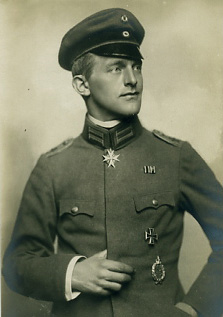
Carl Menckhoff (April 1883 – January 1949) was a German ace credited with 39 confirmed victories. Born in prussia, passionated about motor cars, he alsoparticipated in balloon flights. He was already 31 when the war broke out and joined the army, Infantry Regiment Nr. 106 and participated in three battles against the French and British. At the end of the year he has been awarded already the Iron Cross First Class and Second Class and was wounded several times. He applied for the air service, learned to fly and became one of the oldest pilots in the Imperial German Air Service, as a non-commissioned officer. He started in October 1915 on the Western Front but at the end of 1916 he was still a flight instructor in Cologne. However he was later promoted to staff sergeant, and joined Jagdstaffel 3 stationed at Fontaine-Uterte near Saint-Quentin. He flew Albatros D.IIs for a start, and by the fal of 1917, has gained a string of victories. He was was awarded the Hohenzollern House Order, Knight’s Cross 2nd Class with Swords, and later the “Blue Max” and became a squadron commander in 1918. Shot down and taken prisoner on 25 June 1918, he remained incarcerated until August 1919, when he escaped into Switzerland. Back in Germany he succeeded in business but was arrested in 1938 for currency infringements and later moved again to Switzerland, remaining there until his death in 1949.
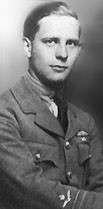
Alfred Clayburn Atkey (August 1894 – February 1971) was a Canadian ace credited with thirty-eight aerial victories (fifth highest scoring Canadian ace), and awarded the MC & Bar. He had the distinction of having all these victories on a heavy two-seater aircraft, and therefore was the highest ranking two-seater pilot on any side. He was born in Toronto, Ontario, but his family moved west to Nunebor, Saskatchewan later. However Atkey moved back later to Toronto to work as a journalist. When the war broke out, he enlisted into the British Army, 2/24th Battalion, London Regiment. It was a Territorial Force sent to France only by June 1916. In October 1916 Atkey was second lieutenant in the Royal Flying Corps. He also served with No. 18 Squadron, flying the the Airco DH.4 and claiming shared victories with his gunners until April 1918 (eight). Then he landed at No. 22 Squadron flying Bristol F.2bs paired with Lieutenant Charles George Gass as his gunner/observer. Atkey and Gass would take part in one of the most famous, epic, legendary aerial duel of the war, on 7 May 1918, called the “Two Against Twenty”. Alongside John Gurdon and Anthony Thornton north-east of Arras they fought twenty German scout aircraft. The pai downed five enemy aircraft and Gurdon-Thornton three. Two days after Atkey-Gass shot down five more aircraft. Atkey became a flight commander and captain, claiming a further 19 aircraft in 15 days, until 2 June 1918. He was decorated of the Military Cross twice, both gazetted, and was transferred to the RAF unemployed list on 3 May 1919.
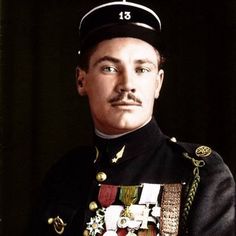
William Gordon Claxton (Born June 1, 1899, in Gladstone, Manitoba) was a Canadian World War I flying ace credited with 37 victories. He became the leading ace in his squadron. He was awarded the DSO, DFC & Bar. He flew with the Royal Flying Corps (RFC) in Canada at 18 in 1917, was trained as a fighter pilot at Camp Borden, and assigned to No. 41 Squadron in France by March. He flew the S.E.5a and had a meteoritic run of victories at the end of the war. He claimed indeed 37 victories in 79 days, with many days of multiple victores. He was very calmn under fire, to the point of being nicknamed “Dozy” which had his planes often badly damaged, and crash-landed in June 1918, brought home shot planes twice. One crash was partiuarly severe: During an epic 20-to-1 duel where he shot down three enemy planes, he was downed, crash-landed, severely wounded in the head but was saved by a skilled and quick German doctor performing cranial surgery…


 Manfred Von Richtofen
Manfred Von Richtofen
 René Fonck
René Fonck Billy Bishop
Billy Bishop Latest Facebook Entry -
Latest Facebook Entry -  X(Tweeter) Naval Encyclopedia's deck archive
X(Tweeter) Naval Encyclopedia's deck archive Instagram (@navalencyc)
Instagram (@navalencyc)





 French Navy
French Navy Royal Navy
Royal Navy Russian Navy
Russian Navy Armada Espanola
Armada Espanola Austrian Navy
Austrian Navy K.u.K. Kriegsmarine
K.u.K. Kriegsmarine Dansk Marine
Dansk Marine Nautiko Hellenon
Nautiko Hellenon Koninklije Marine 1870
Koninklije Marine 1870 Marinha do Brasil
Marinha do Brasil Osmanlı Donanması
Osmanlı Donanması Marina Do Peru
Marina Do Peru Marinha do Portugal
Marinha do Portugal Regia Marina 1870
Regia Marina 1870 Nihhon Kaigun 1870
Nihhon Kaigun 1870 Preußische Marine 1870
Preußische Marine 1870 Russkiy Flot 1870
Russkiy Flot 1870 Svenska marinen
Svenska marinen Søværnet
Søværnet Union Navy
Union Navy Confederate Navy
Confederate Navy Armada de Argentina
Armada de Argentina Imperial Chinese Navy
Imperial Chinese Navy Marinha do Portugal
Marinha do Portugal Mexico
Mexico Kaiserliche Marine
Kaiserliche Marine 1898 US Navy
1898 US Navy Sovietskiy Flot
Sovietskiy Flot Royal Canadian Navy
Royal Canadian Navy Royal Australian Navy
Royal Australian Navy RNZN Fleet
RNZN Fleet Chinese Navy 1937
Chinese Navy 1937 Kriegsmarine
Kriegsmarine Chilean Navy
Chilean Navy Danish Navy
Danish Navy Finnish Navy
Finnish Navy Hellenic Navy
Hellenic Navy Polish Navy
Polish Navy Romanian Navy
Romanian Navy Turkish Navy
Turkish Navy Royal Yugoslav Navy
Royal Yugoslav Navy Royal Thai Navy
Royal Thai Navy Minor Navies
Minor Navies Albania
Albania Austria
Austria Belgium
Belgium Columbia
Columbia Costa Rica
Costa Rica Cuba
Cuba Czechoslovakia
Czechoslovakia Dominican Republic
Dominican Republic Haiti
Haiti Hungary
Hungary Honduras
Honduras Estonia
Estonia Iceland
Iceland Eire
Eire Equador
Equador Iran
Iran Iraq
Iraq Latvia
Latvia Liberia
Liberia Lithuania
Lithuania Mandchukuo
Mandchukuo Morocco
Morocco Nicaragua
Nicaragua Persia
Persia San Salvador
San Salvador Sarawak
Sarawak Uruguay
Uruguay Venezuela
Venezuela Zanzibar
Zanzibar Warsaw Pact Navies
Warsaw Pact Navies Bulgaria
Bulgaria Hungary
Hungary

 Bundesmarine
Bundesmarine Dutch Navy
Dutch Navy Hellenic Navy
Hellenic Navy Marina Militare
Marina Militare Yugoslav Navy
Yugoslav Navy Chinese Navy
Chinese Navy Indian Navy
Indian Navy Indonesian Navy
Indonesian Navy JMSDF
JMSDF North Korean Navy
North Korean Navy Pakistani Navy
Pakistani Navy Philippines Navy
Philippines Navy ROKN
ROKN Rep. of Singapore Navy
Rep. of Singapore Navy Taiwanese Navy
Taiwanese Navy IDF Navy
IDF Navy Saudi Navy
Saudi Navy Royal New Zealand Navy
Royal New Zealand Navy Egyptian Navy
Egyptian Navy South African Navy
South African Navy






























 Ukrainian Navy
Ukrainian Navy dbodesign
dbodesign